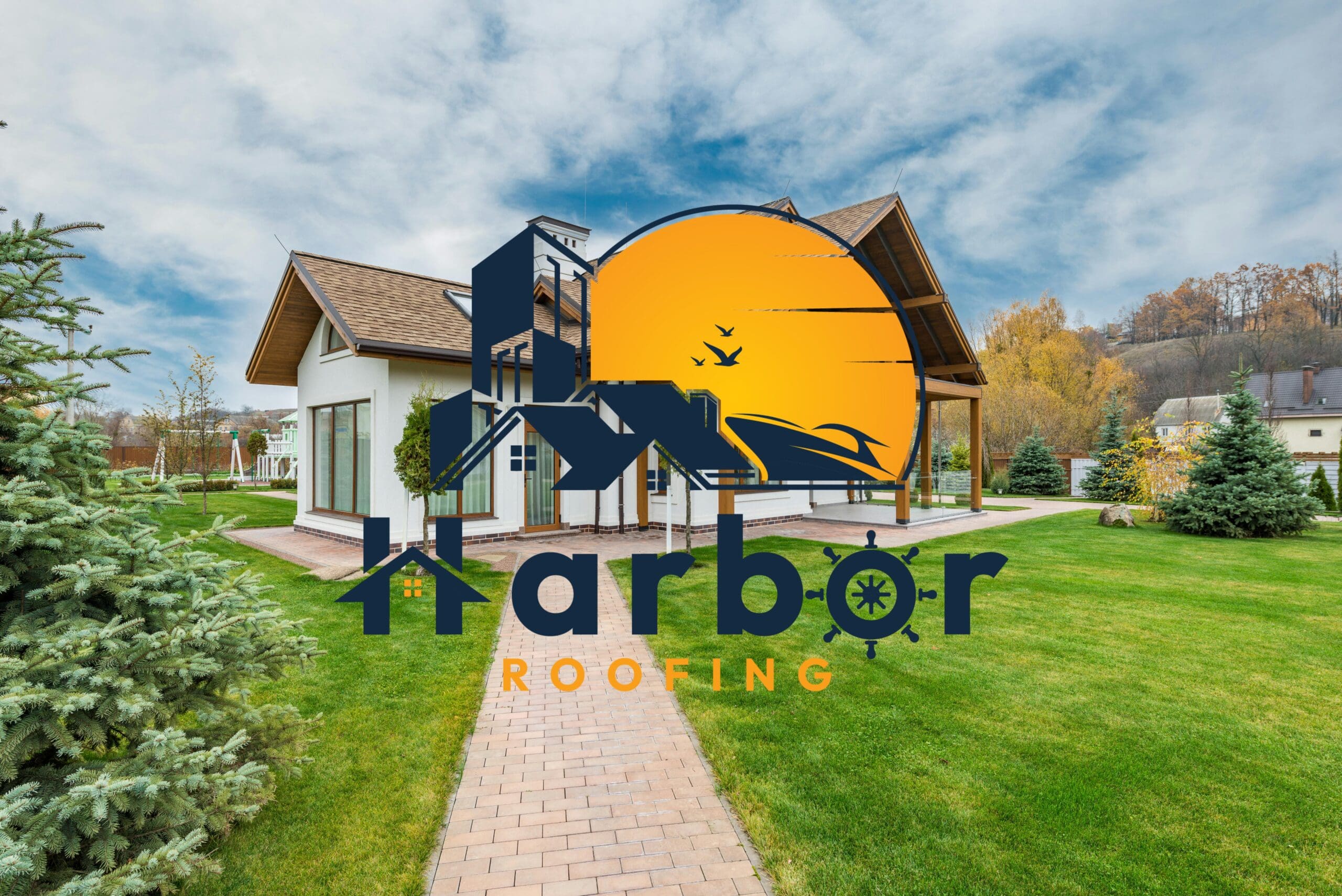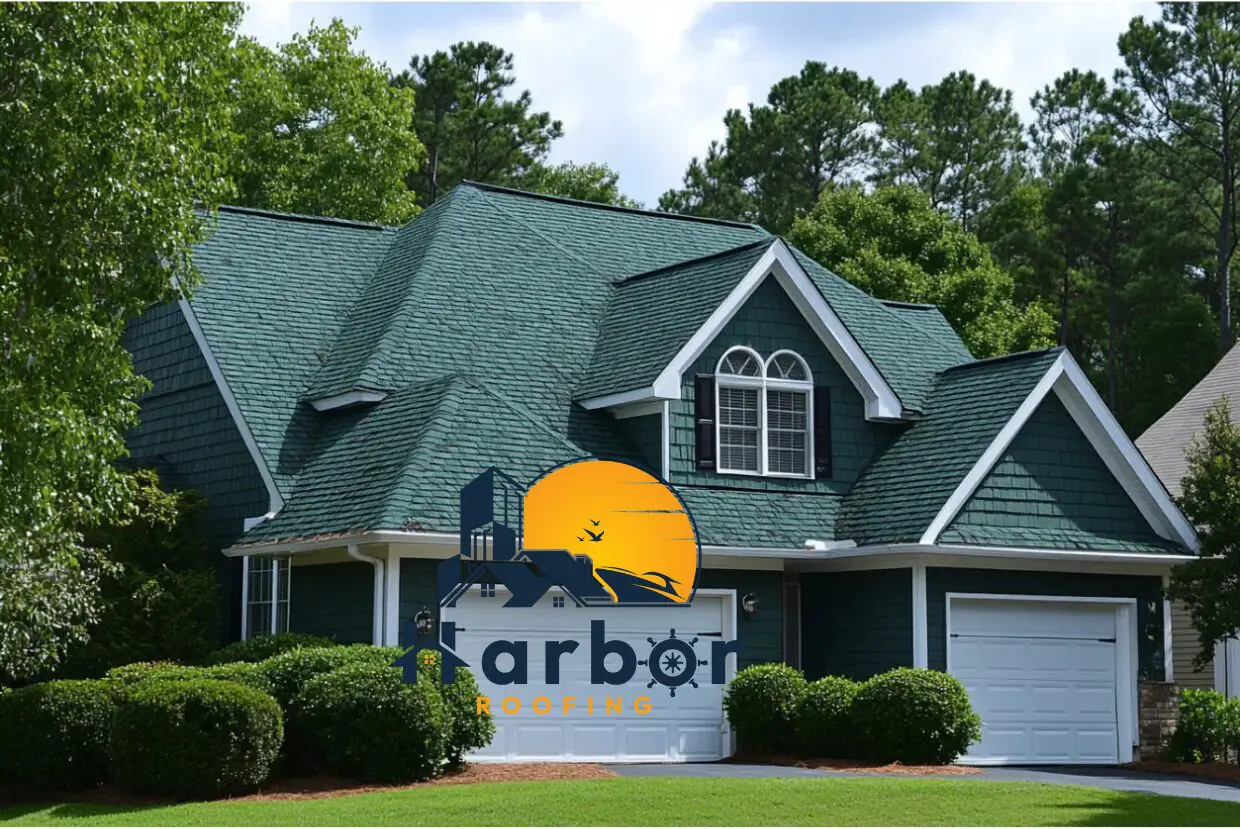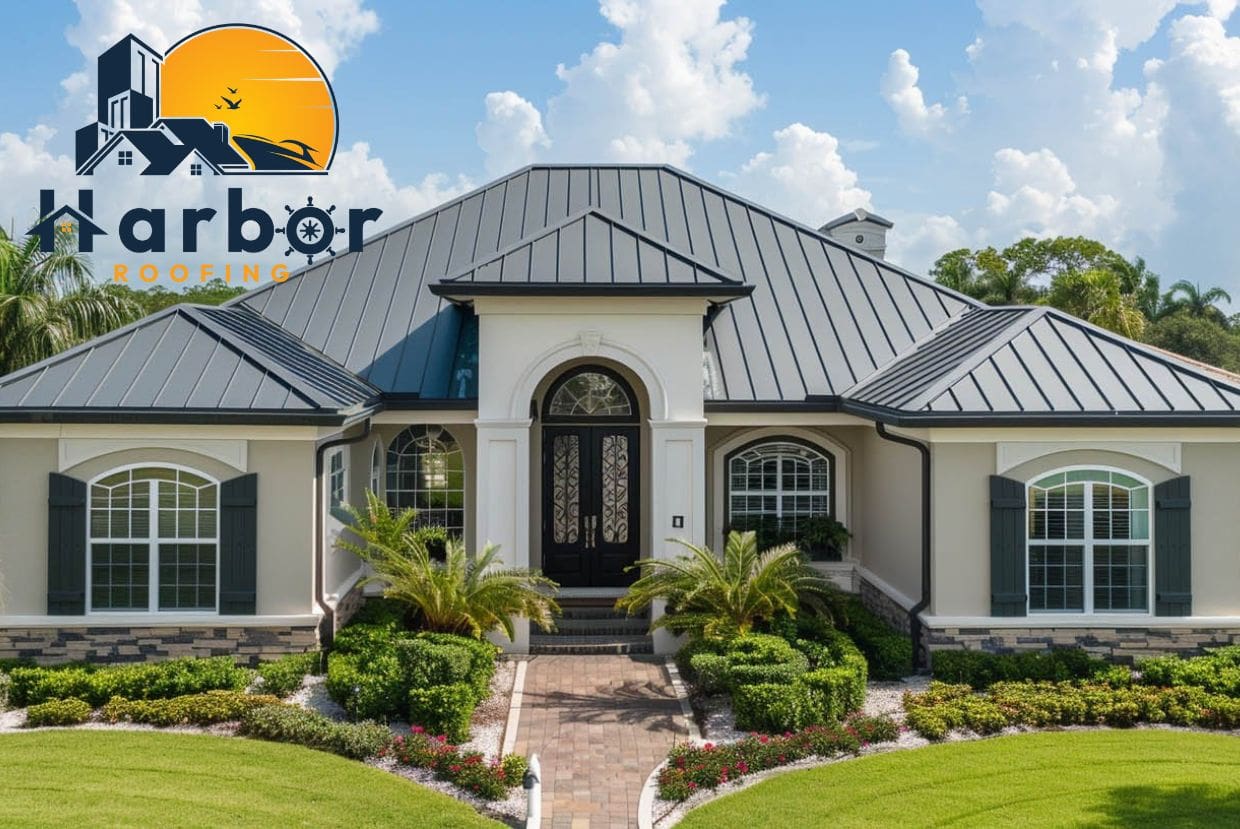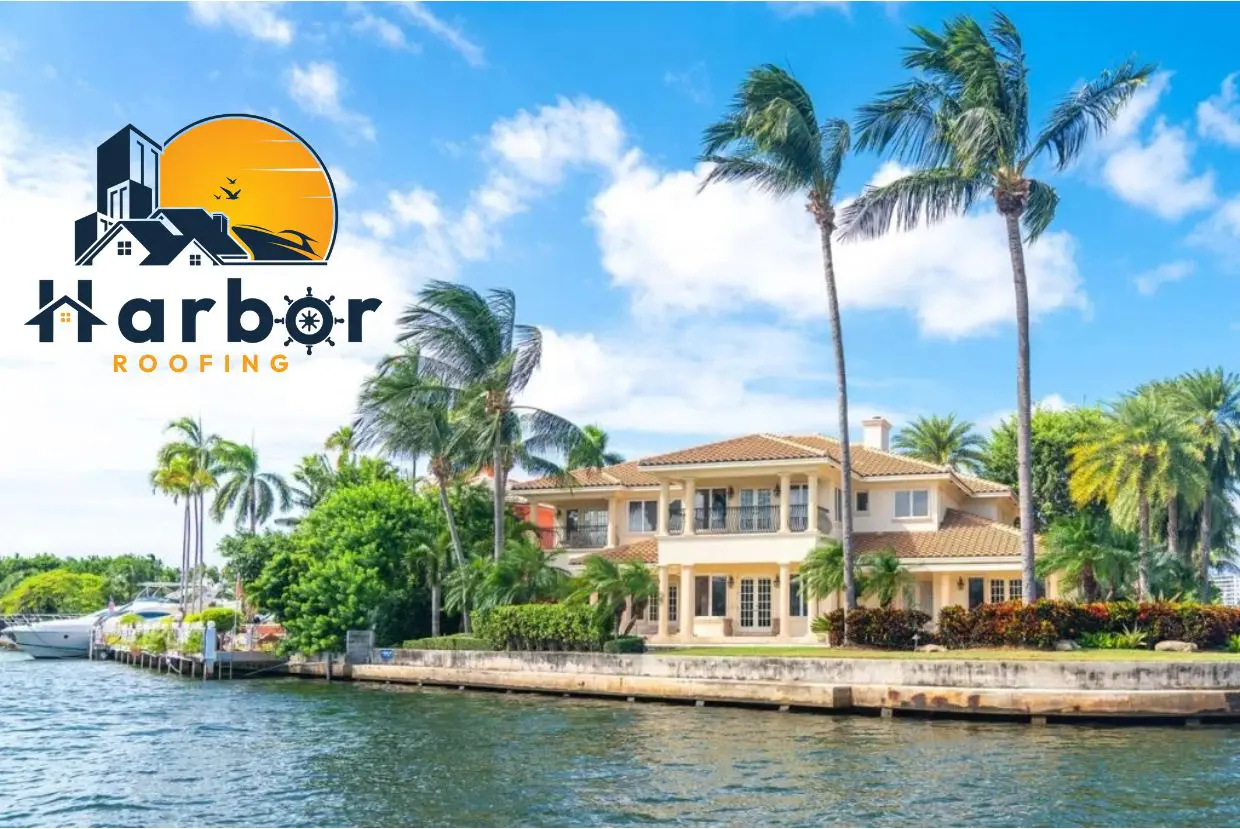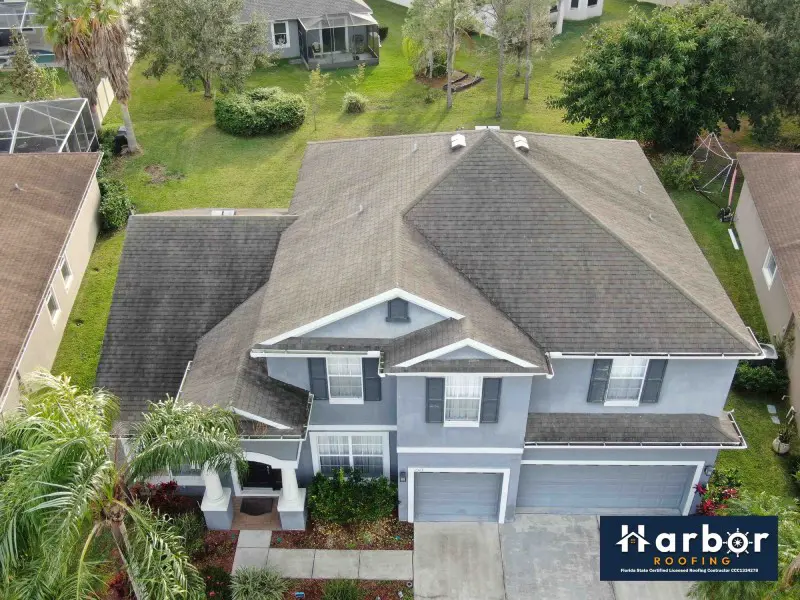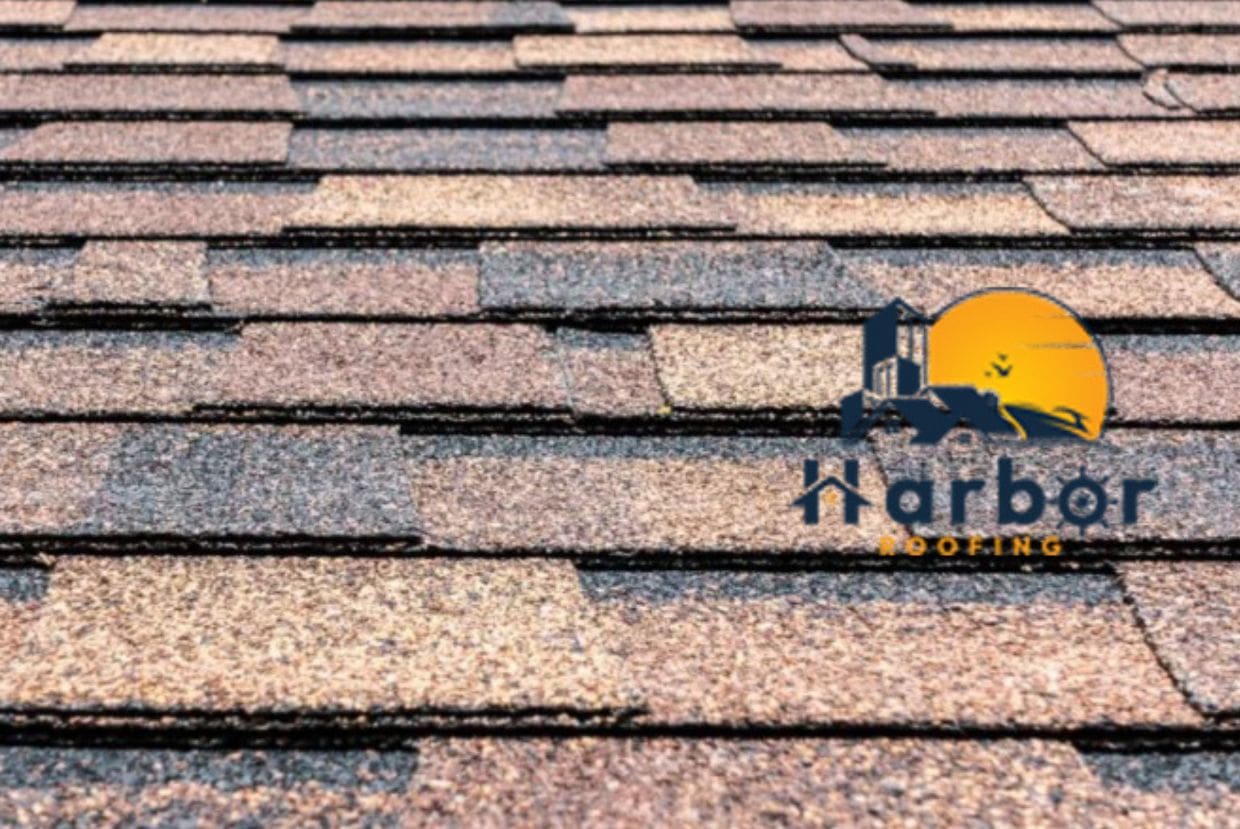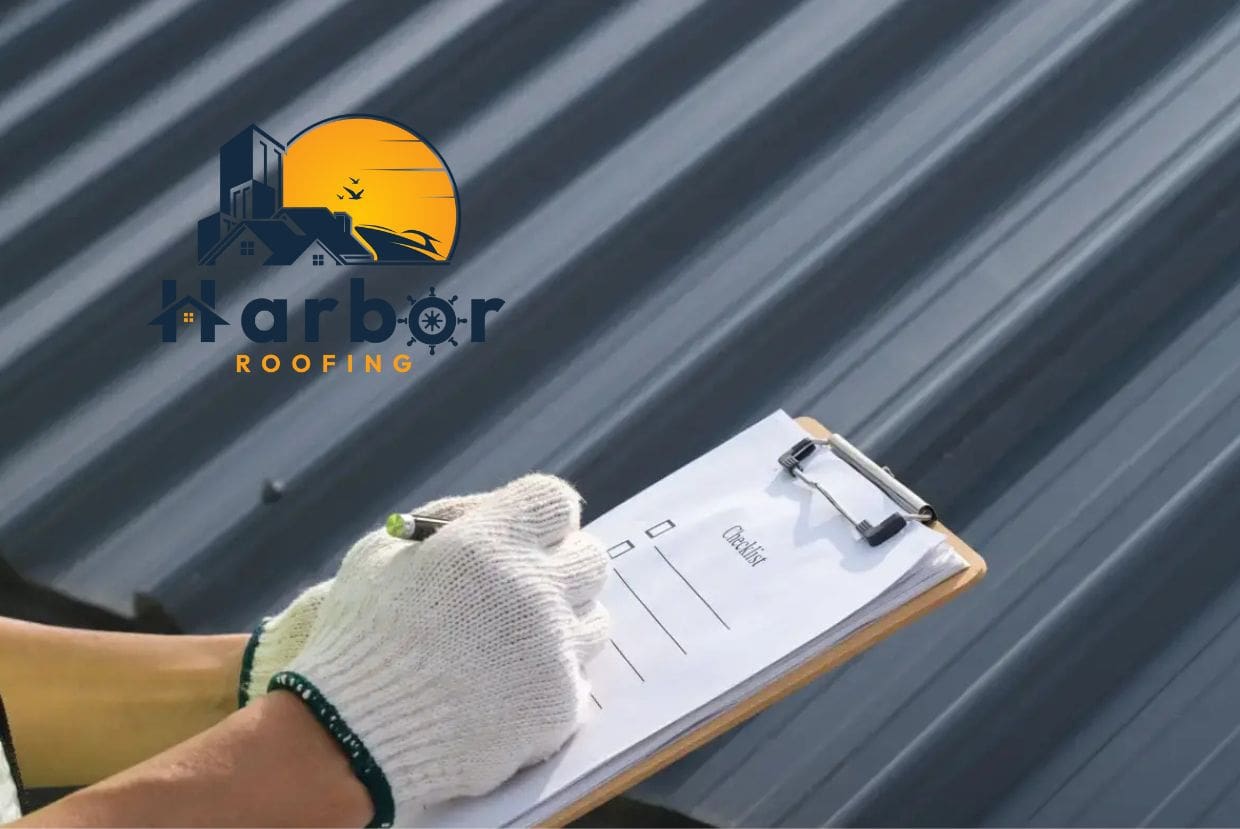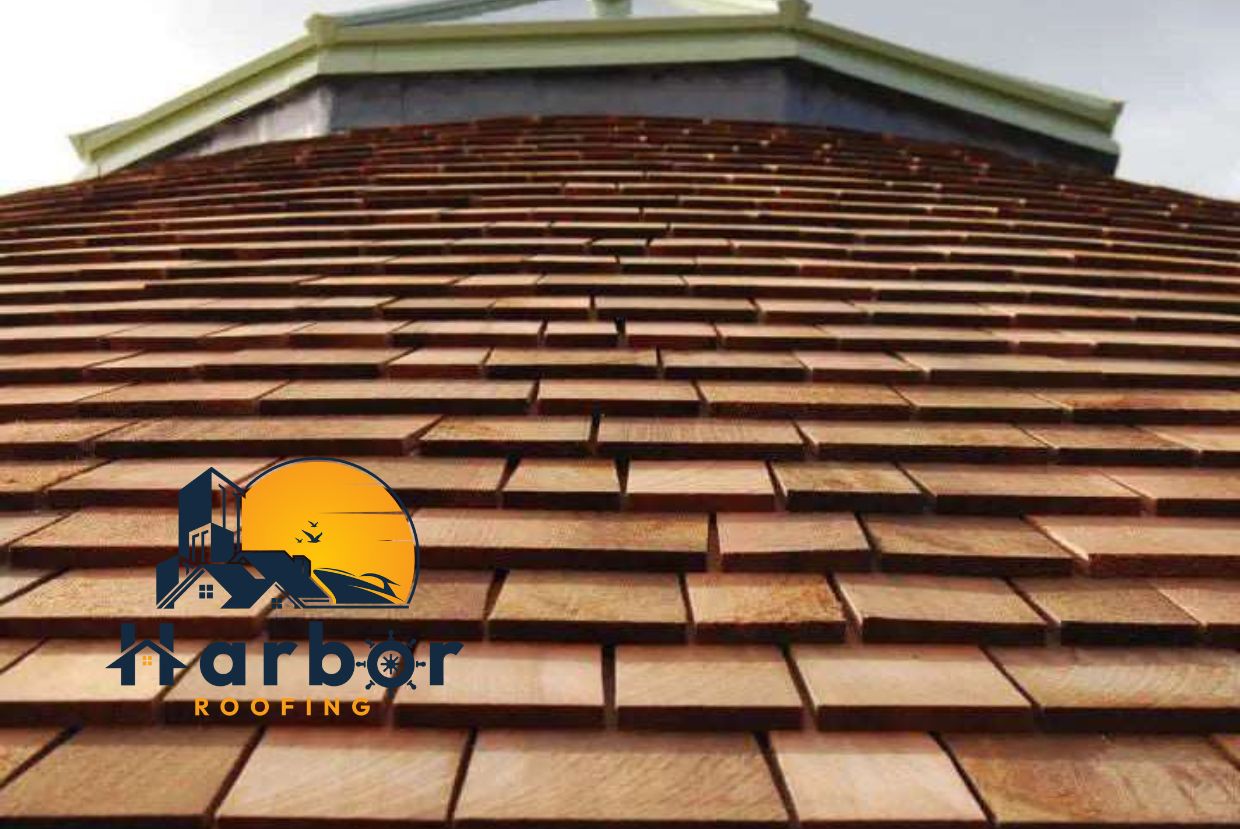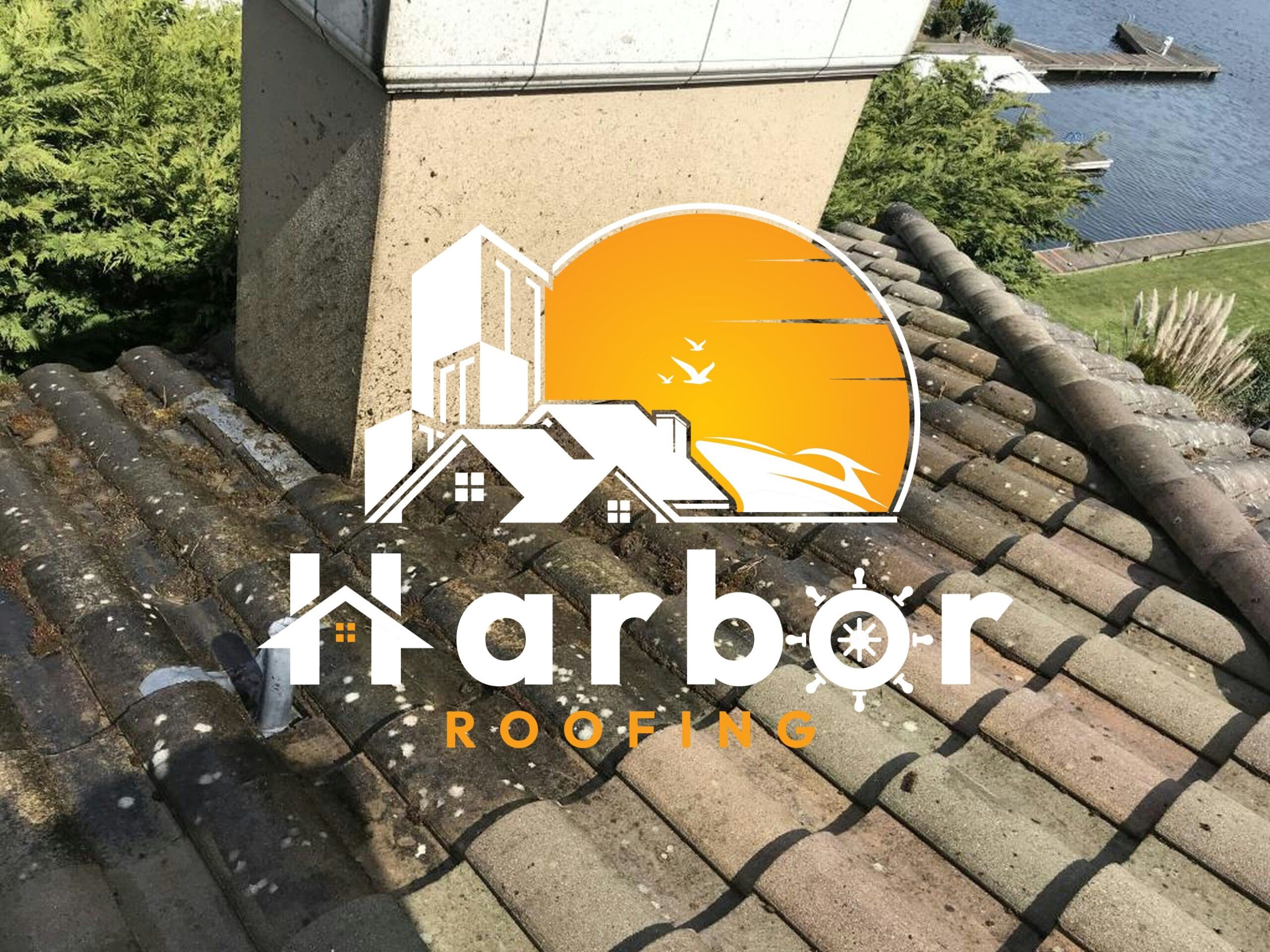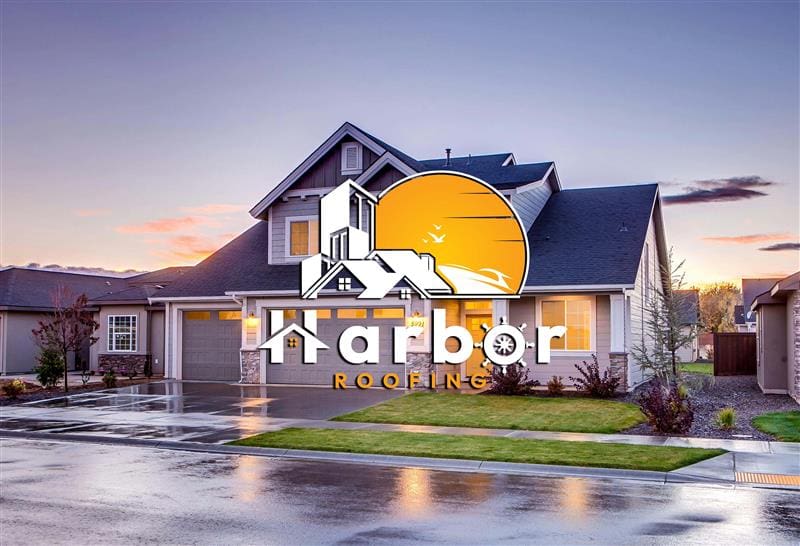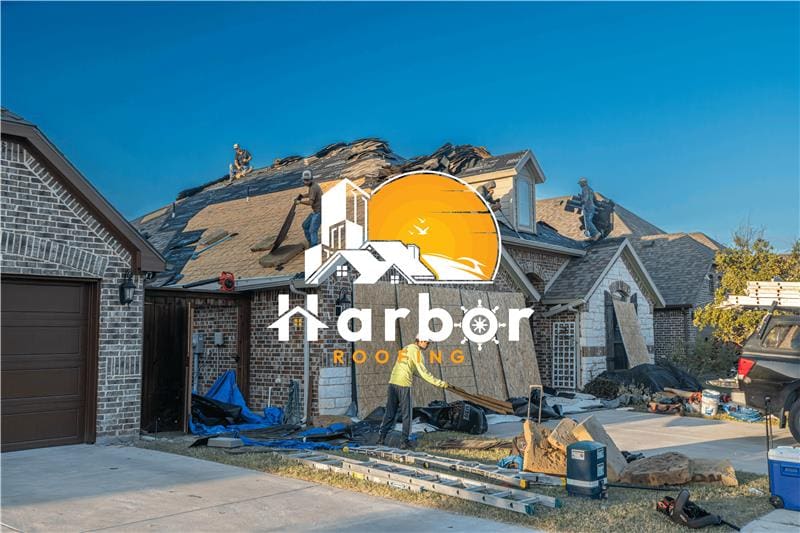Table of contents
Have you ever come across dark streaks or green patches across your roof? You are not alone. Moreover, in Florida’s constant humidity and sudden downpours, roof cleaning isn’t as much of a luxury as a necessity. Elements like algae, mold, and mildew flourish in Florida’s climate, slowly chipping away at your roofing materials and shortening their lifespan.
To help you prevent that, today’s guide will explain how often you should clean your roof, the hidden risks of buildup, and the best ways to keep your roof in top shape. Because a clean roof isn’t just a nice thing to have, it’s a smart way to protect your biggest investment.
Why Florida Roofs Need Frequent Cleaning
Florida’s subtropical climate is a cradle for roof trouble. Hot weather, humidity, and frequent rainstorms create the ideal breeding ground for organic growth. Even shaded spots under eaves or trees collect moisture, which gives way to mold and algae infestation. Compared to dry areas, Florida roofs remain wet for longer periods of time, so contaminants get more time to grow, expand, and degrade.
These situations make regular roof cleaning a necessity. Since without it, the elements can cause problems down the line. Moreover, once the growth takes hold, it doesn’t simply burn off with the sun, but rather gets worse.
Typical Growth Hazards
- Algae Growth — Gloeocapsa magma produces black streaks, consumes shingles, and holds heat, typically on asphalt and tile roofs.
- Mold Colonies — Flourish in shaded, moist areas and can creep into attics, impacting indoor air quality.
- Lichen Spread — A combination of algae and fungi that adheres to roofing surfaces strongly, making it difficult to remove and erodes surfaces.
- Debris Buildup — Branches and leaves accumulate in valleys and gutters, promoting rotting and standing water.
Long-Term Effects
- Reduced Lifespan — Mold and algae degrade roofing materials, resulting in early cracking or shingle lifting, and tile lifting.
- Water Intrusion — Blocked gutters and moss buildup retain moisture, causing leaks and wood rot under the surface.
- Less Efficiency — Algae-darkened roofs absorb more heat, which increases the cooling costs and reduces energy efficiency.
- Safety Hazards — Slippery mold and moss can pose fall risks during inspections or cleaning, especially on tile roofs.
Recommended Roof Cleaning Interval
Asphalt Shingles
Asphalt shingles are particularly susceptible to algae such as Gloeocapsa magma, which flourish in Florida’s wetter environment. However, these dark streaks and eventual damage can be avoided by cleaning roof asphalt shingles every 1 to 2 years. Whereas, houses with shaded areas, inadequate drainage, or vegetation nearby may need to be cleaned yearly.
Forgetting about these conditions lets algae and mold feed on the granules, reducing the lifespan of the roof. Regular cleanings assist in maintaining the look and integrity of the shingles and facilitate effective energy efficiency by reducing your roof’s temperature.
Tile Roofs
Tile roofs are more long-lasting, but they are not completely resistant to organic growth. Concrete and clay tiles are permeable, so algae and lichen can adhere to the surface and develop in microscopic crevices. The ideal way to tackle these issues is by cleaning your roof every 2 to 3 years, or more frequently in the shade.
Furthermore, if your metal roof is heavily shaded by trees or in an area where algae is typical. A more intense cleaning routine can keep buildup from getting embedded deeply and hard to take out. Plus, having clean tiles can help you avoid surface wear and greatly improve your curb appeal.
Metal Roofs
Metal roofing is distinguished by its long lifespan and smooth surfaces that easily shed debris. Nonetheless, in coastal areas, salt spray and airborne debris can still lead to accumulation over time. Cleaning is usually required every 3 to 5 years, depending on how close you are to the ocean and landscape characteristics.
Although algae is not as clingy to metal as it is to shingles or tiles. Pollen, leaves, and dirt can still collect, particularly in seams and joints. Regular roof cleaning maintains the protective coating and discourages premature corrosion.
High-Risk Situations
Some homes just require more regular roof cleaning, no matter what material they have. Shaded roofs, for example, dry slowly and allow ideal conditions for mold. Roofs in areas with tree lines bring debris and sap that retain moisture. Coastal residences experience salt air, which speeds surface wear and corrosion. Heavy pollen months leave a sticky film that fosters algae growth.
In such instances, yearly or even bi-yearly cleaning can be a big deal. A customized cleaning schedule to suit your roof’s surroundings guarantees the longevity and safety of your house structure.
Signs That Your Roof Needs Cleaning
Dark Streaks And Black Staining
Dark streaks on your roof are usually an indicator of Gloeocapsa magma, a prevalent blue-green algae. These stains love Florida’s moist, shaded climates and frequently form on asphalt shingles. While primarily cosmetic at first, when these are ignored, they can lead to more belligerent growth.
Likewise, if not washed, algae colonies become breeding grounds for moisture, compromise shingle strength, and reduce your roof’s lifespan. It’s best to treat this early on with a soft wash before long-term structural damage and discoloration become issues.
Moss or Lichen Growth
Moss and lichen not only make your roof look ugly, but they also trap moisture against your roof’s surface. Moreover, this provides the perfect environment for rot, mold, and shingle breakdown, especially in cooler, shaded areas.
Moss has root-like growths that lift shingles, and lichen develops hard white or green spots. Both must be gently brushed away, not scraped, so as not to damage the material beneath. The appearance of either is a good indication that your roof needs to be attended to right away.
Granule Buildup or Debris
Seen gritty granules in your gutters? That’s a warning sign. Asphalt shingles lose protective granules as algae and water set in. Eventually, this degrades the UV resistance and waterproofing of the shingles. Furthermore, organic material such as dead moss, leaves, and pollen can block gutters and hold in water, promoting rot. Regular checking and cleaning will prevent this buildup from causing expensive repairs.
Increased Energy Bills
If your summer air conditioning bill suddenly goes up, your grimy roof could be the reason. Algae-darkened roofing surfaces soak up more heat, lowering your roof’s reflectivity and raising indoor temperatures.
This added heat load makes your HVAC system work harder, resulting in increased utility expenses. A clean roof reflects sunlight better, being an ally of overall home energy efficiency, of particular significance in Florida’s harsh climate.
Best Roof Cleaning Methods And Safety
Soft Washing Versus Pressure Washing
Pressure isn’t always the best choice when it comes to roof cleaning. High-pressure washing can actually remove granules, crack tile coatings, and nullify your roof warranty. That’s why the Asphalt Roofing Manufacturers Association (ARMA) suggests soft washing for safe, effective cleaning.
Soft washing applies low-pressure water and specific cleaners to soften and remove algae, mold, and grime without damaging the roof surface. It’s the best approach for maintaining material integrity, particularly in Florida’s hot, humid climate, where gentle cleaning is usually a necessity.
Safe Solutions
For soft washing, residents or professionals typically utilize a 50/50 combination of domestic bleach and water, recommended by ARMA for use on asphalt shingles. This product readily kills algae such as Gloeocapsa magma without requiring abrasive scrubbing.
Sodium percarbonate solutions are a more gentle, environment-friendly solution that is biodegradable and less corrosive. Plant-safe surfactants are also used by certain cleaning businesses that degrade biological growth without harming nearby landscaping. However, always make sure to rinse thoroughly when done to prevent chemical buildup.
DIY Versus Professional Cleaning
Although DIY cleanup might seem to be budget-friendly, it usually carries an underlying risk. Homeowners will not be aware of safe chemical ratios, proper runoff procedures, or how to walk on roofing without causing damage.
Trained roof cleaning professionals, such as Harbor Roofing, are well aware of Florida building codes, regional runoff regulations, and optimum procedures for every roofing material. They’re also certified in the use of safety harnesses, fall protection, and reducing overspray, making them the safer, smarter alternative for long-term roof maintenance.
How to Extend Time Between Cleanings
Install Algae-Resistant Shingles or Zinc/Copper Strips
One of the most effective long-term solutions to roof algae is to select algae-resistant shingles. These have copper granules that naturally repel algae growth over time. When you’re planning a roof replacement, this can significantly lower cleaning requirements.
Already got a roof on? Adding zinc or copper strips along the ridgeline can be beneficial. Rainwater activates these metals, releasing ions that kill algae and mold as it rains down the roof, producing a self-cleaning effect.
Trim Trees And Keep Gutters Clean
Overhanging branches shade, shed leaves, and create organic debris accumulations, all of which retain moisture on your roof. That moisture is an ideal setting for mold, moss, and algae to grow.
Trimming trees and shrubs back regularly gives your roof more sunlight and keeps leaves from clogging gutters. Clean gutters also keep water from backing up, cutting the chance of rot, and allowing your roof to dry sooner after rain.
Make Sure Roof Receives Sunlight & Airflow
Shaded roofs become wetter for longer periods, particularly in Florida’s climate of high humidity. This persistent dampness promotes biological growth that can stain and ruin your shingles or tiles. Providing the most sunlight is crucial to a drier, healthier roof.
Also, don’t forget attic ventilation. Inadequate airflow causes heat and humidity to get trapped, which seeps upwards and encourages mold on your roof deck. Ventilation improvement and clearing obstructions from attic vents can yield a significant impact on roof lifespan.
Maintenance Checklist for Florida Roof Cleaning
- Asphalt Cleaning — Have a soft wash of asphalt shingle roofs done every 1 to 2 years, particularly if the house is shaded or located in a humid region where algae and mold have a tendency to develop rapidly.
- Tile Cleaning — Have tile roofs washed every 2 to 3 years because they harbor algae, mold, and leaf matter. In tree-dense or coastal regions, have them cleaned more often to keep them in good health and condition.
- Annual Inspection — Check your roof at least once a year for staining, broken tiles, or granule accumulation. Early identification of debris or biological growth decreases long-term damage and cleaning requirements.
- Soft Wash Timing — Schedule soft washing following pollen seasons or prolonged rain periods. Such conditions provide ideal growth sites for algae, and therefore, scheduling cleaning prior to damage amplification becomes important.
- Algae Protection — Install copper or zinc strips, or consider algae-resistant shingles, to organically repel organic growth. These low-maintenance features minimize chemical cleaning requirements and increase roof longevity.
- Gutter Maintenance — Trim extended tree limbs and clean gutters every few months. This eliminates shade and debris accumulation, creating improved airflow and drainage, both of which deter mold and algae growth.
Keep the Green in Your Lawn, Not Your Roof
Having a clean roof isn’t just about the looks, but how it helps your home stay protected from algae, mold, and costly damage. Florida’s climate demands proactive care, especially with roof types needing cleaning every 1 to 5 years. Need expert advice? Contact Harbor Roofing and benefit from their tailored roof cleaning plans and local expertise.
